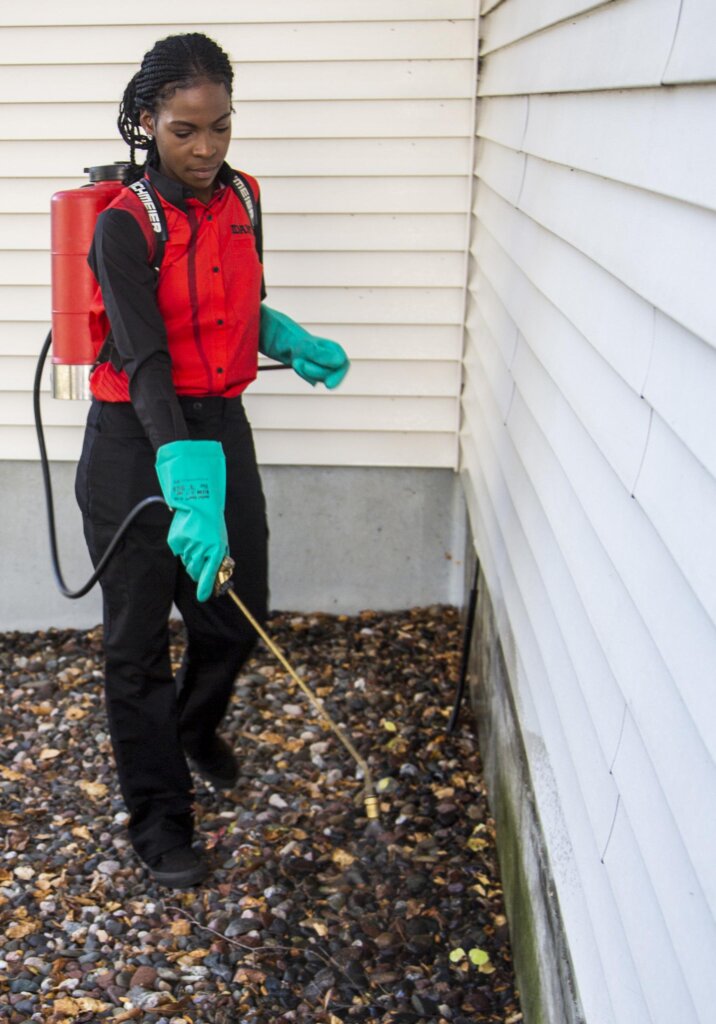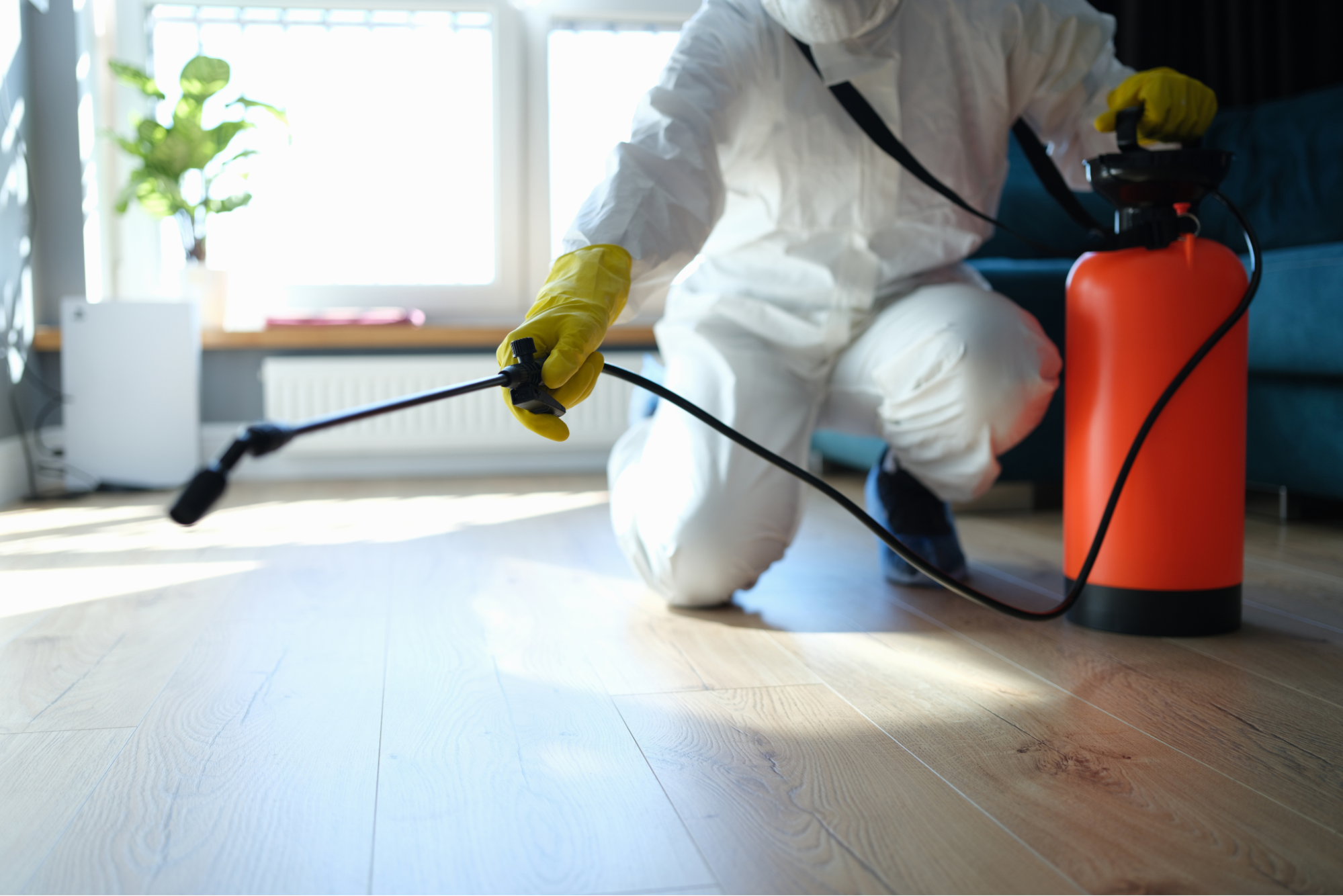A1 Bed Bug Exterminator Charlotte - Specialized Bed Bug Elimination
A1 Bed Bug Exterminator Charlotte - Specialized Bed Bug Elimination
Blog Article
Bed Pest Therapy Breakdown: Comparing Chemical Vs. Non-Chemical Solutions
In the world of bug control, especially when managing the consistent problem of bed pests, the choice in between chemical and non-chemical therapy solutions can be a pivotal one. Both methods provide distinct advantages and drawbacks, affecting factors such as efficiency, safety and security factors to consider, and overall expense. By taking a look at the nuanced details of each method, a clearer understanding of which path to go after in dealing with a bed insect problem can be obtained.
Effectiveness of Chemical Therapies
Chemical therapies for bed bug invasions have actually been widely recognized for their fast and powerful efficacy in eradicating these bugs. When thinking about the efficiency of chemical therapies, it is important to understand that they can offer a quick and thorough remedy to a bed bug issue. Expert pest control specialists often depend on insecticides to target bed bugs at numerous phases of their life process, including nymphs, eggs, and grownups. These chemicals commonly function by interfering with the bed pests' nerves, bring about paralysis and ultimate death.
Furthermore, chemical treatments have the benefit of using residual effects, implying that they can continue to eliminate bed insects even after the preliminary application. This recurring action is specifically advantageous in combating any kind of potential re-infestations. In addition, the rapid action of chemical treatments can bring relief to individuals facing serious bed bug infestations, permitting them to regain control of their space swiftly.
Security Worry About Chemical Solutions
One crucial element that needs cautious consideration when utilizing chemical remedies for bed pest therapy is ensuring the security of residents and the atmosphere. While chemical treatments can be efficient in eradicating bed insects, they might pose risks if not handled properly. One of the primary safety and security worry about chemical options is the potential injury they can create to human health. Exposure to particular chemicals utilized in bed insect therapies can bring about respiratory system concerns, skin irritability, or other negative reactions, especially in individuals with pre-existing problems or sensitivities. In addition, incorrect application or dose of chemical pesticides can result in harmful deposits remaining in the cured location, presenting long-lasting health and wellness threats to occupants.
In addition, the environmental effect of chemical solutions is an additional substantial consideration. Some chemicals utilized in bed insect treatments might be damaging to beneficial bugs, wildlife, and environments if they leach right into the soil or water systems. It is important to utilize chemical treatments deliberately, complying with safety standards, and thinking about much less harmful options to minimize these dangers and ensure the secure and reliable management of bed insect invasions.
Advantages of Non-Chemical Methods
Taking into consideration the prospective security problems and environmental effect connected with chemical options for bed insect treatment, discovering non-chemical approaches offers an appealing option with several unique benefits. Non-chemical approaches use a safer option for houses, particularly those with people, pet dogs, or youngsters conscious harsh chemicals. These methods eliminate the threats of direct exposure to hazardous compounds, decreasing the possibility for adverse health and wellness effects. Furthermore, non-chemical treatments are eco-friendly, as they do not add to air or water pollution, making them a sustainable choice for insect control.
In addition, non-chemical options can be efficient in targeting bed bugs, consisting of hard-to-reach areas where chemical therapies may not pass through - A1 pest control charlotte nc bed bugs. Methods such as heat treatment, vacuuming, steam cleaning, and mattress encasements supply thorough elimination without the use of unsafe chemicals.
Limitations of Non-Chemical Treatments

In addition, non-chemical treatments typically need several applications to attain successful removal. This can be taxing and may not always ensure complete removal of all bed insects and their eggs, especially in concealed or hard-to-reach places.
Furthermore, the success of non-chemical treatments greatly relies on appropriate implementation and thoroughness, which can be challenging for individuals without expert expertise. Insufficient application of non-chemical methods might lead to insufficient obliteration, bring about consistent invasions and the requirement for extra treatments.
As a result, while non-chemical therapies have their benefits, it is important to recognize these limitations and consider them when establishing one of the most efficient method for taking care Website of bed bug invasions.
Price Comparison: Chemical Vs. Non-Chemical Options
Given the limitations associated with non-chemical therapies, an essential facet to review in the context of bed bug management is the price comparison in between chemical and non-chemical choices. Chemical therapies commonly entail the application of insecticides by professionals, which can vary from $250 to $900 per space, depending on the intensity of the problem and the dimension of the area to be dealt with. On the other hand, non-chemical treatments like heat treatment or heavy steam can be extra costly, with expenses varying from $1,000 to $6,000 for an entire home. While the initial expense of chemical treatments may appear reduced, multiple therapies might be needed to completely eliminate the problem, potentially raising the overall cost. On the various other hand, non-chemical cockroach prevention alternatives may give an extra environmentally friendly and lasting option, although they can be cost-prohibitive for some people. Eventually, when thinking about the cost of bed pest therapy options, it is necessary to consider the ahead of time expenses against the efficiency and lasting sustainability of the chosen method.
Conclusion

Considering the potential safety and security concerns and ecological impact linked with chemical remedies for bed insect treatment, exploring non-chemical approaches offers an appealing alternative with numerous distinctive advantages.Offered the constraints associated with non-chemical therapies, a crucial element to assess in the termite control options context of bed bug management is the cost comparison between chemical and non-chemical alternatives. In comparison, non-chemical therapies like warmth treatment or vapor can be extra expensive, with costs ranging from $1,000 to $6,000 for an entire home. While the preliminary expense of chemical therapies might appear lower, multiple treatments may be needed to completely get rid of the invasion, potentially raising the general cost.In conclusion, when contrasting chemical and non-chemical bed bug treatment options, it is crucial to consider effectiveness, security, advantages, restrictions, and price.
Report this page